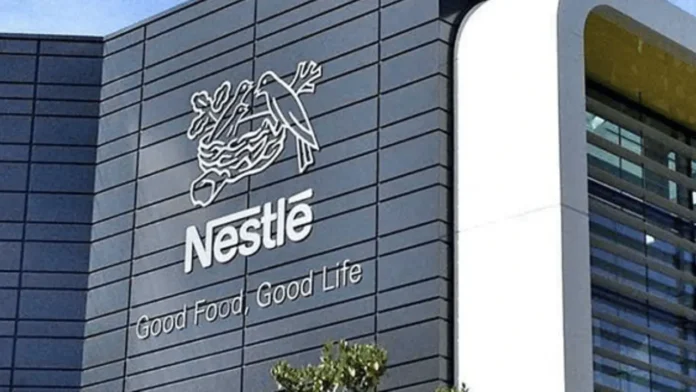Nestle India Ltd. has ceded market share to local competitors due to its consistent price hikes in response to escalating expenses. Nevertheless, the company does not intend to reduce prices in order to regain market share.
“We do have local competition in coffee and noodles, and only where there is acute price competition, we have seen some loss of volume,” Suresh Narayanan, chairman and managing director at Nestle India, said during an investor meet in New Delhi on Wednesday. “But we are trying to respond fast enough, by way of tailoring our price points, to mitigate any losses.”
Nevertheless, Nestle is currently not contemplating a reduction in product prices. Despite a slight easing of inflation in its raw material costs, some crucial inputs like green coffee, cocoa, wheat, and milk still maintain their high price levels. While packaging costs remain stable, there are ongoing uncertainties in the Middle East that could affect oil prices, as noted by Narayanan. He stated that Nestle is prioritizing bridge packs as a strategy to address ongoing inflation since consumers are consistently trading down across various price ranges and product categories.
Nestle India Rivals:
Fellow companies such as ITC Ltd. and Hindustan Unilever Ltd. have similarly acknowledged the heightened competition, with local players staging a resurgence in a deflationary market. For instance, HUL noted a loss of market share in its mass segment, which includes lower-priced products, primarily due to increased competitive pressure.

Nestle India’s entry-level Maggi noodles are now available in packs of 7, 10, and 14. “We have to be very careful with the price points and make trade-offs between downtrading and premiumisation,” said Narayanan.
Narayanan stated that Nestle India continues to maintain a keen interest in opportunities for inorganic growth.
“So far, we have focused on 100% organic growth. So, I think our quest for M&A continues,” he said. “But the acquisition will need to meet our criteria in terms of the right fit, capability to add value, and valuations. Our eyes and ears are open, and hopefully something will come up in the future.”
The packaged goods manufacturer had been one of the leading contenders in the race to acquire Capital Foods Pvt., the company behind brands such as Ching’s Secret and Smith & Jones. According to sources familiar with the matter who requested anonymity, Nestle India was in competition with companies such as Tata Consumer Products Ltd. and The Kraft Heinz Co.
Between 2018 and 2022, the prominent packaged food company achieved a compounded annual growth rate (CAGR) of approximately 7% in terms of volume and 11% in terms of value.
Narayanan mentioned that Nestle India anticipates experiencing increased volume growth in the forthcoming years.
“In the future, I would like us to grow faster than 7%; it’s not an impossibility,” he said. “But launching products or getting into categories that are deeply dilutive to margins will not really be our focus. The company will target higher growth through infrastructure expansion.”
Check more news: Pizza Hut Goes Green: Mahim Store Goes Sustainable!
Nestle India is amplifying its presence in small towns and villages through a strategy it calls “rurban.” This approach involves significantly increasing the number of distribution points, expanding the on-ground sales teams, enhancing in-store visibility, and boosting participation in village fairs, also known as “haats.”
As of the end of September, the producer of Kitkat chocolates reported that its distribution network encompassed 5.2 million outlets, with direct access to approximately 1.6 million of them. By 2024, their goal is to extend their rural distribution network to 1.2 lakh villages, each with a population exceeding 20,000.
“It is only a question of sweating the assets, and we expect to see significant growth in the coming year,” said Narayanan.





